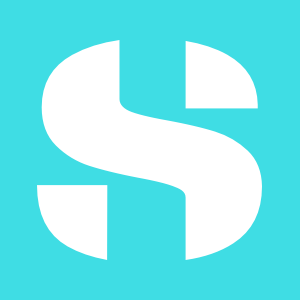Overview
I’ve spent the last 8 years of my life working as a Digital Product Designer. This post organizes some of the soft skills I’ve cultivated over the years into a set of “core principles”. For me, these principles have provided a distinct advantage in my journey and have lasted the test of time. This post should be valuable to anyone in the design profession and or tech space.
I’m sharing these principles in hopes of helping others have success in their professional journey during these rapidly changing times.
Background
Over the last 8 years I’ve supported a variety of organizations including agencies, startups and the enterprise space across a variety of verticals. All organizations had made varying degrees of progress in their journey towards digital transformation. I’ve had amazing success as an agent of change in challenging enterprise cultures and have gotten my head blown off making a case for design more than once.
Last Thanksgiving (2019) I was laid off due to millions in reported losses and a massive reorganization. Since then I’ve been at home spending time with my family, building my professional portfolio (for the first time) and unfortunately like many of us, practicing social distancing due to the coronavirus (COVID-19). I’m smiling as I’m typing this, because all of these experiences helped me grow in ways I could have never imagined.
If you take the time to read this post, please consider leaving a comment. Any themes in feedback will be greeted with open arms and applied to my new portfolio to be released some time between Q1-Q2 this year (2020).
The Principles
The soft skills that have helped me on my professional journey over the years can be categorized into the following “core principles”:
- Lead through inquiry.
- Leverage the collective.
- Know the organization.
- Know the business.
- Everything is an experiment.
- Measure your outcomes.
- Have heart.
Ok, let’s dig in!
1. Lead through inquiry
No matter what your role or title, asking empowering questions as a primary means of getting things done, helps cultivate a safe space for creativity, communication and collaboration.
On the other side of the spectrum , telling people what to do, as a primary means of getting things done, most likely will diminish creativity, slow initiative progress and can have an extremely negative impact on your team’s morale. You may also stifle your own personal growth.
One of my favorite books, “Multipliers” digs into this, in great detail.
2. Leverage the collective
Use your intelligence to amplify the smarts and capabilities of the people around you. You can have a resoundingly positive and profitable effect on organizations — getting more done with fewer resources, developing and attracting talent, and cultivating new ideas and energy to drive organizational change and innovation.
Participatory design is a great example of this i.e. Design Sprints, Co-Design Workshops and Liberating Structures. Getting feedback from your team on your work is also a great practice and helps cultivate your own personal growth.
3. Know the organization
Understanding your organization’s level of commitment to modern design thinking, team structure, and its political landscape will help you optimize your efforts as a design professional. It will also help you avoid obstacles and in a perfect world could help you align with any organizational change before it impacts your role.
A good way to get started is to have coffee with organizational leaders to get a download of the landscape, gather advice and offer yourself as a friendly resource. Finding an executive sponsor can help you create change safely. Other steps include making sure you’re participating in regular 1:1s with your leadership and maintaining a high-level of awareness in all calls and organizational communications.
4. Know the business
Taking the time to understand the business drivers behind the service you support helps you make decisions that balance customer need with business goals. At the end of the day, everyone’s paycheck hinges on delivering value to the customer AND helping the organization generate revenue.
Regardless of your role, educating yourself on the different customer journeys across your organization’s portfolio helps you cultivate a holistic view that reveals how your team’s decisions may impact other parts of the service.
FYI — My choice method of visualizing the customer journey is Practical Service Blueprinting because it marries the “front stage” customer journey with the backstage supporting “business processes” and it’s easily consumed by any stakeholder group. There is a great online course for this here.
5. Everything is an experiment
Experiments are already running. Reap the rewards.
At this very moment, whether you are aware of it or not, your professional role, ideas, processes, and even your personal life are participating in experiments. Cultivating an awareness of your own assumptions and testing them, reduces risk, creates a safe space for feedback, room for pivots and will ultimately lead to growth. When an organization adopts a culture of experimentation it experiences these benefits as well.
Growth begins with letting go of outcome.
Experimentation aligns well with the Buddhist philosophy of “Detachment” where suffering comes from attachment to outcome and or personal belongings. The inverse of this principle is best personified through the practice of “Dogma” which has the potential to stifle all of the positive outcomes associated with a culture of experimentation.
Moving forward.
Do you feel like you’re under constant pressure to come up with the “big idea”? Do you feel like you have a “safe space” to learn from experiences in your professional life? your personal life? If this is a new concept for you, consider loosening your attachment to that “big idea” just enough to validate it and or make it better. You’ll be so glad you did!
6. Measure your outcomes.
Designing blind.
Can you tell me if a customer has seen and or used the six-figure feature, multiple teams spent months to create? Is your team in a constant state of urgency working long hours focused on “just delivering”? Does your organization have a backlog of “big ideas” with little to no background data?
Do you see regular pivots on major initiatives, throwing multiple teams into confusion and frustration? Is a “reorganization” a common practice at your organization after a failed initiative, generating layoffs and turnover?
Does any of this sound familiar? These are all potential indicators that your organization may have inadequate means of measuring the impact of their work.
Your organization’s capacity to measure qualitatively and quantitatively is paramount. Metrics like “new users”, “page views”, “support contact” and “revenue” are extremely high-level and aren’t adequate for measuring the impact of design changes post release (ROI on design).
Telemetry tools like Amplitude and Mixpanel have been around for years. Optimization tools like VWO and Optimizely have also been around for years and yet today, many organizations still can’t measure the impact of their work post release.
Risk vs. Reward.
The expense associated with improving your ability to measure is a fraction of the expense associated with “designing blind” as an organization. Investing in your ability to measure will not only pay for itself, it will yield an exponential reward across the organization as a whole. It will help validate all those great ideas in your backlog, provide accurate reporting on the performance of your efforts and ultimately, lead to growth.
7. Have heart.
The unspoken war of the marketplace.
Tech roles aren’t for the weary or faint of heart. We are the first responders in the unspoken war of the marketplace.
There are some unfortunate parallels between the average tech role tenure and how fast consumer markets change. Organizations are constantly “re-organizing” and in turn, generating significant layoffs. Meanwhile, employees AND consumers in the tech space are hiring and firing organizations at break-neck speed.
Organizations dump millions into contractor roles to move faster than their archaic HR process and as a result have grown a “gig economy” job market where the average tech contractor doesn’t get PTO (paid time off) when they are sick or burnt out. What? No summer vacation? The same applies to other “gig economy” roles outside of the tech contracting industry i.e drivers and food delivery services. “Gig economy” workers pay out of pocket for their time off. Many people are living hand-to-mouth these days and that IS an unfortunate situation, especially if you have a family to take care of.
Is contracting becoming “fast-food” labor for tech organizations, where the illusion of moving fast is prioritized over the long-term gains that come with investing in the the human? That depends on the organization and who you ask. Some orgs do convert their contractors to permanent roles. Many don’t. At the end of the day, contracting is a voluntary sport and some love it.
Regarding the design profession, depending on your organization’s culture and ability to measure it’s efforts, making a case for design can be just as traumatic as getting laid off - and sometimes, you do get laid off for making a case for design.
Exploring the bright side.
I love working in tech. I get to learn from brilliant people while solving complex challenges and driving business impact. It’s addictive and exhilarating. Do you like working from home? Many tech professionals have the luxury of working remotely and on a merits based schedule.
Depending on the organization and which path you choose you could get vested in an early stage startup and cash out big one day. You might land a permanent role that includes “retention bonuses” paying out an annual sum of $15,000 or more. The promise of a high paying tech salary is real, you just need to fight for it!
Charging on!
“Life doesn’t get easier or more forgiving, we get stronger and more resilient.”
― Steve Maraboli, Life, the Truth, and Being Free
For best results, listen and watch your step. Be brave and never stop challenging yourself. Every challenge you encounter will strengthen your armor, sharpen your sword and improve your overall contribution.
Focus on amplifying the efforts of others over yourself. Don’t be attached to outcome, because nothing is permanent in this fast paced world. Be gentle, have a empathy for yourself, your team members and the organization.
Be proud of your experiences and carry any scars like a badge of honor, they will serve you well!





